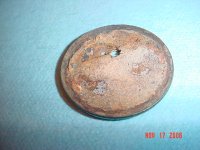Although folks commonly call these things "freeze" plugs, they are in reality "core" plugs. Their real purpose is to allow for removal of the core casting sand. When a block is cast, a hardened sand mold is created to match the contours of the desired block shape, internal passages, & dimensions. Molten metal is poured into this mold & allowed to cool.
The temporary/expendable sand mold is broken off the completed casting. There is still sand in the now inacessible internal water jacket cavities which is removed through the previously molded core holes. After these rough access holes are further machined, cheap "tin" core plugs are inserted.
Some newer casting technologies use different methods but the older method was sand casting.
Since these plugs are the weakest part of the block, they "sometimes" pop out if water in the block freezes. Thus they often get the name "freeze plugs". This was never the intent of the plugs & they often don't protect the block from cracking if water does freeze in it.
I doubt if the plugs are really designed to pop out from system over pressure. The "pop out" just can't be controlled that accurately. More likely that a hose or a radiator tank will burst.
To prevent these cheap "tin" plugs from popping out at the wrong time, competition engines sometimes use screwed down bridge straps to retain the plugs. Others tap the core holes & use screw in plugs.
Since the thin, cheap metal plugs are subject to rust/corrosion damage they are often the first thing to fail on a higher mileage engine. Attached is a pic of a failed plug. There is rust scale on it , a hole to the right that was drilled to facilitate removal of the plug via sheetmetal screw, & a tiny but deep hole slightly to the left that corroded all the way through & caused a leak. In this case, it appears that the hole may have started from a tiny flaw in the plugs galvanized surface.
As you know, they sometimes just pop out as they weaken from corrosion damage, or other problems.
D

 Hi Guest!
Hi Guest!

 smilie in place of the real @
smilie in place of the real @
 Pretty Please - add it to our Events forum(s) and add to the calendar! >>
Pretty Please - add it to our Events forum(s) and add to the calendar! >> 

